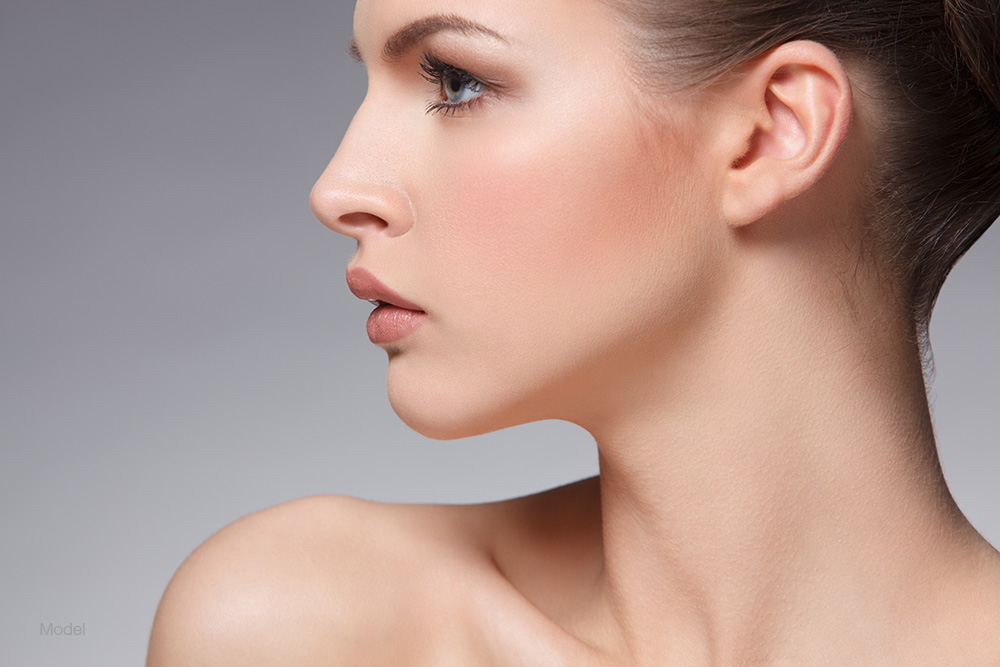03 July 2025 | 5 minute read

Rhinoplasty is one of the most popular plastic surgery procedures worldwide. Patients seek nose surgery for a wide range of cosmetic and medical reasons, including correcting a deviated septum and enhancing facial balance. While the surgery itself lasts a few hours, the recovery time can extend into weeks and months.
If you are looking to get a rhinoplasty or just had one, here’s what to expect post-surgery. It is essential to understand what will happen every week and what you can expect at each stage.
How Long Does Rhinoplasty Recovery Take?
The total recovery time varies depending on the type of rhinoplasty. Most patients fully recover within 12 months and can see their results after a few months—that is, if a highly trained surgeon performed their surgery. Additionally, following your surgeon’s postoperative instructions is crucial, not only for optimal results, but to avoid complications. If you have had previous surgery or significant trauma to your nose, recovery may be a little slower than average.
Week 1: Initial Recovery
During the initial recovery period, you may experience some bruising and significant swelling. Towards the end of the week, the bruising starts to fade, and the color returns to your nose. In most cases, the surgeon will strap the nose splint and tape your nose.
After the first week, you will have a post-operative checkup schedule to have the splint and any non-dissolvable stiches removed. Although you can return to performing everyday tasks, it is imperative to avoid strenuous activities. Some tips that get you through the first week successfully include:
- Keeping your head elevated
- Gently clean the area
- Avoid lifting heavy objects
Weeks 2–4: Reduced Swelling
The second to fourth week is typically when most patients see their swelling resolve. The surgeon will remove the splint and tapes in this phase. Usually, the bruises have already cleared up, and you can return to desk work. During this intermediate phase, patience is key. Still, avoid lifting heavy objects and irritating the nasal area.
In this phase, changes become more noticeable. You can blow your nose gently and resume most daily activities. Speak to a qualified plastic surgeon before engaging in contact sports during this period.
Months 1–3: Subtle Nose Refinement
By now, your nose is taking its new shape. Healing is still in progress, but subtle changes will become more apparent at this time. As with the preceding phase, patience remains key. While you may feel ready to return to your routine, it is essential to continue following your aftercare instructions.
For example, avoid the sun as it can damage the skin and worsen swelling. Additionally, a protein-rich diet can help speed up the recovery process by providing the body with the necessary nutrients for tissue repair.
During this period, you can begin to enjoy your new look. However, your nose is still sensitive and in the process of healing. Be sure to attend all follow-up appointments with your surgeon to monitor your progress and ensure optimal recovery.
Months 3–12: The Final Results
Most of the healing occurs within the first few months after rhinoplasty. For some patients, recovery can extend up to a year. Since this phase is crucial to the final results, it is essential to consult a surgeon for any adjustments if you are dissatisfied with the outcome. Only about 15% of people undergo revisions after the third month. Close monitoring by your surgeon ensures that you enjoy optimal results once you reach the 12-month mark. By the twelfth month, the nose will have settled into its shape harmoniously. The journey is now complete.
What Factors Affect the Recovery Timeline?
During the recovery phase, some factors more than others expedite or slow down rhinoplasty recovery. Here are the top three:
Lifestyle
Generally, leading a healthy lifestyle is the best way to speed your recovery. Avoid smoking and drinking: smoking impedes circulation, while alcohol can increase bleeding and cause other complications. Gentle movement is encouraged to promote blood flow; however, be cautious to avoid strenuous activities, especially during the first few months after surgery.
Discharge Orders
Every rhinoplasty is accompanied by discharge orders that detail the postoperative care, medications, and general outline of the recovery process. Qualified surgeons offer detailed orders that prioritize your recovery. Avoid generic orders not curated for you. The order is tailored to you from the surgeon to ensure optimal long-term results.
Type of Rhinoplasty
Not all rhinoplasty procedures are created equal. Cosmetic first time procedures usually heal faster than medical (after trauma) or revision surgeries. This is because medical-induced rhinoplasty may be more invasive and requires more adjustments over the healing period.
Tips for Faster Rhinoplasty Recovery
While every nose job recovery is unique, there are proven tips to reduce the recovery time. Here are the top five tips that set you up for faster recovery:
- For the first few months, keep your nose elevated and sleep on your back. Avoid putting pressure on the nose.
- Minimise sun exposure. Generally, avoid extreme temperatures that can exacerbate the swelling and numbness.
- Avoid strenuous activities.
- Avoid blowing your nose and aggravating the nasal area.
- Quit smoking and drinking.
- Lymphatic massage treatments can help resolve swelling quicker.
Interested in Rhinoplasty in Tunbridge Wells, Kent?
If you are considering nose surgery, it’s essential to seek an experienced surgeon for this complex procedure. Ms Nora Nugent is a consultant plastic surgeon who has helped hundreds of patients achieve facial balance and renewed confidence with rhinoplasty. Call us at 44 1892 619248 or fill out our online contact form today to schedule a consultation with Ms Nugent at our award-winning clinic in Tunbridge Wells.
